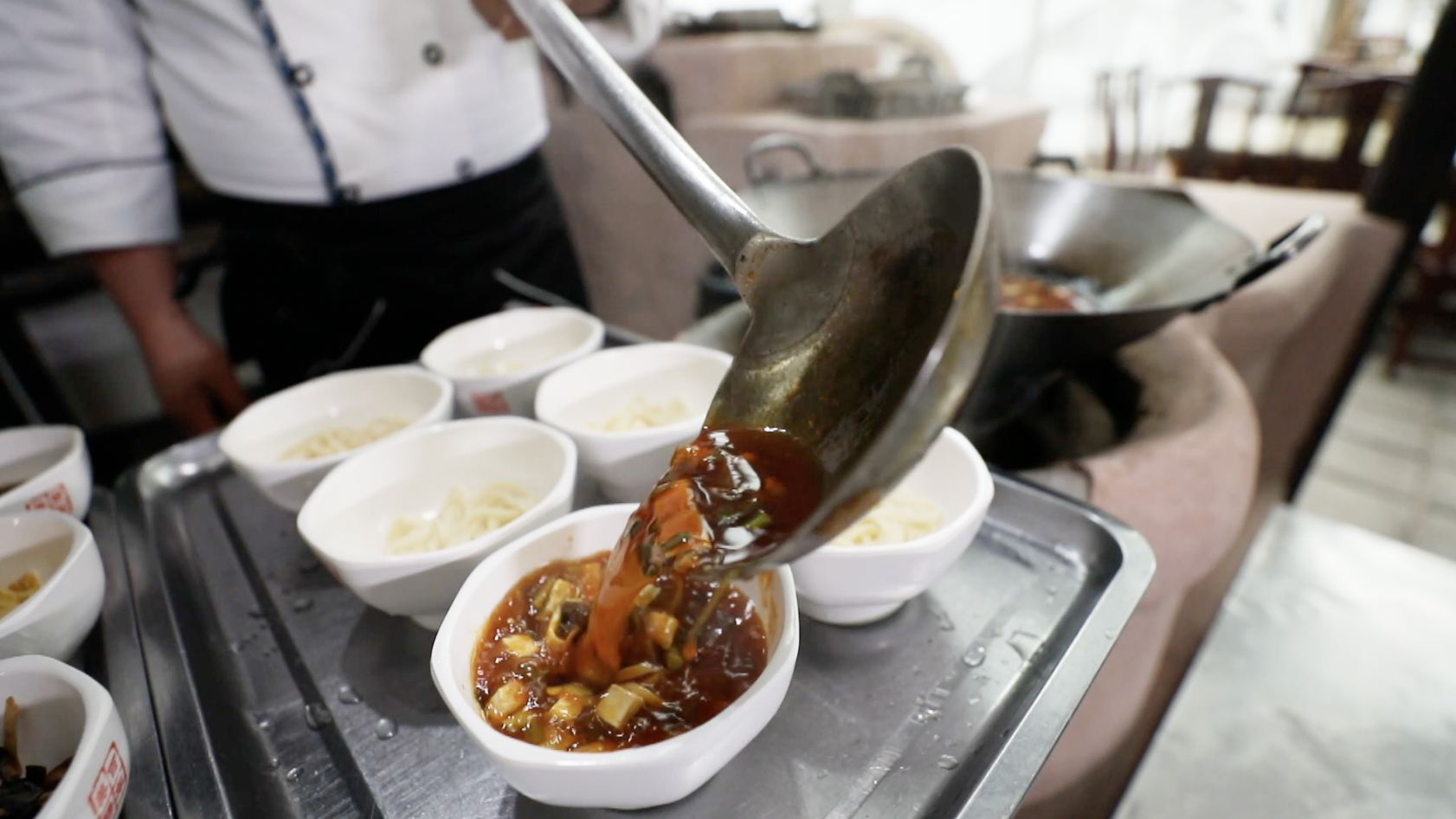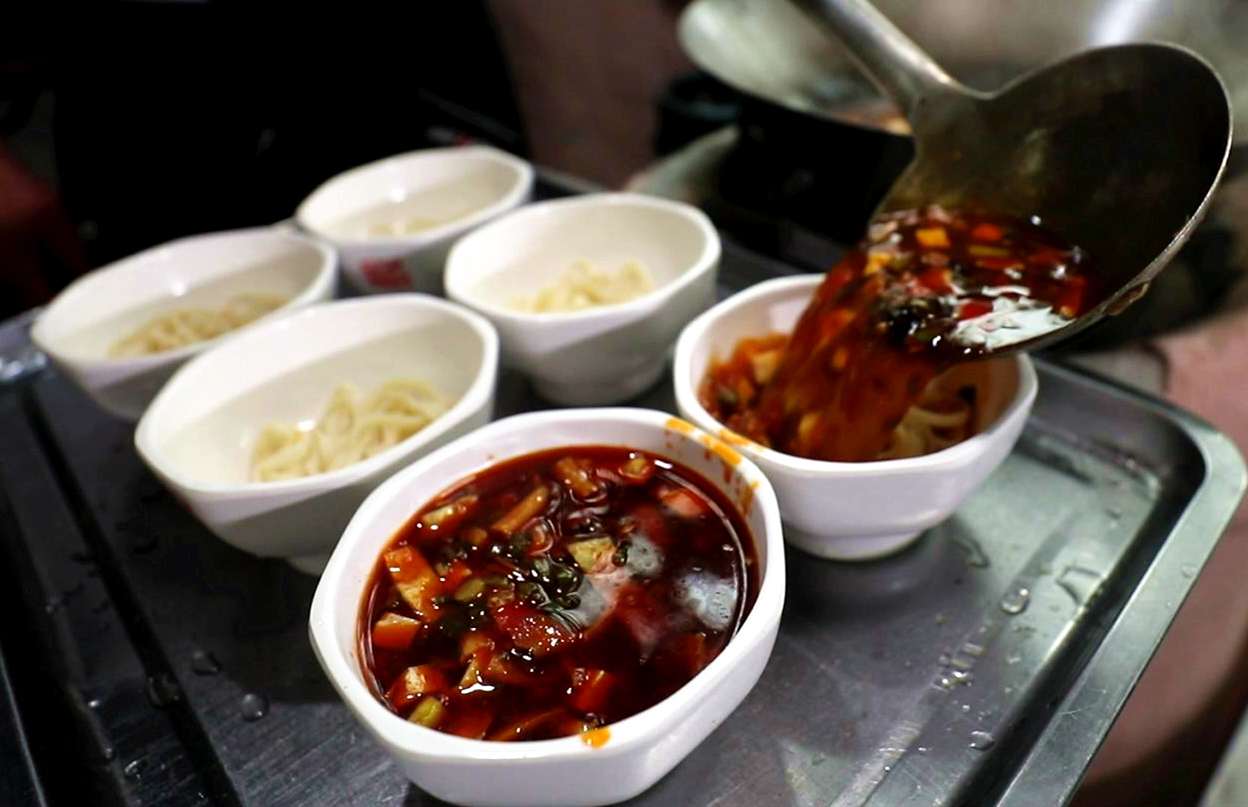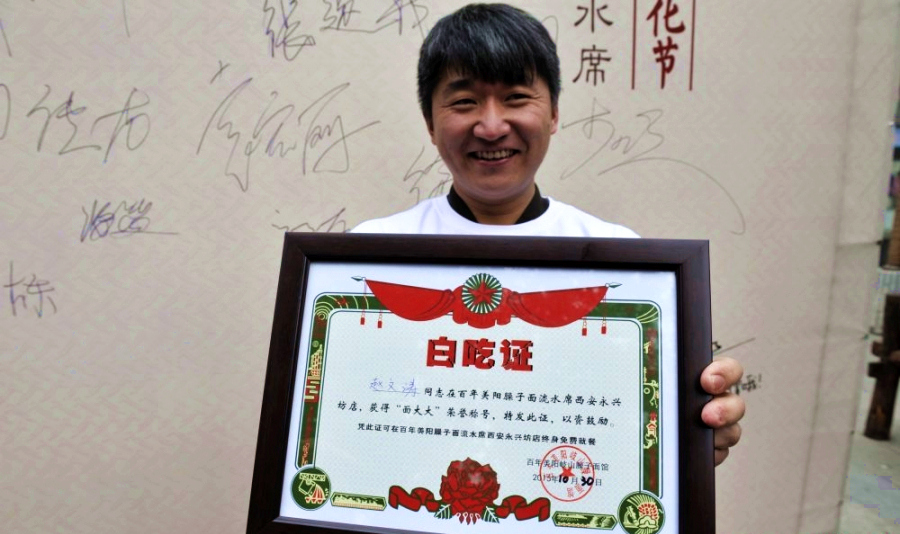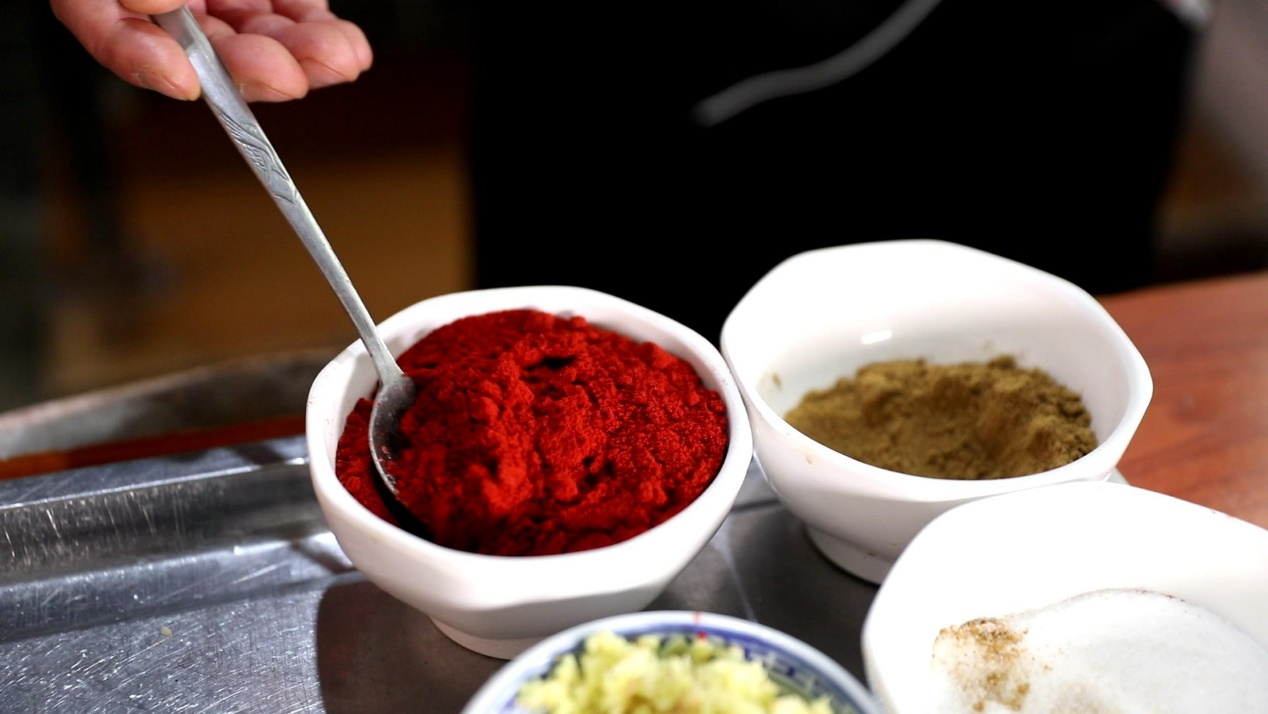
Flavor
15:51, 09-May-2019
A TASTE OF ASIA - Nearly $30 mln worth of Qishan noodles sold annually in China
Hu Chao, Zhao Ruixuan, Han Weihua
03:09


Some Saozi noodles were read in a local restaurant in the Qishan County. /CGTN Photo
Some Saozi noodles were read in a local restaurant in the Qishan County. /CGTN Photo
Qishan County in northwestern China's Shaanxi Province famous for its noodles regularly organizes noodle eating competitions, and winners are entitled to free noodles for life.
The records, decorated on the restaurant walls, mention about contestants who gulped down 43 bowls in one minute and another man who finished 79 bowls of noodles in five minutes.
Contestants are served famous Qishan noodle. More than 300 restaurants across the country sell them, locals say. Tourists visiting the region must try the these noodles.

This man ate 43 bowls of Qishan noodles in one minute was honored with a certificate. /Photo from sanqin.com
This man ate 43 bowls of Qishan noodles in one minute was honored with a certificate. /Photo from sanqin.com
“We come to eat the noodles every time when we visit here. We like their special flavor very much. It taste sour but also sweet and salty,” one tourist from Tianjin said.
Wang Haibing works in a local restaurant and has been preparing authentic Qishan noodles for more than two decades. It takes hours to prepare them, he says.
“You have to roll the dough out as thin as paper and also chop it as thinly as possible,” said Wang.

Wang uses flour from the wheat harvested in the previous season for making the noodles. /CGTN Photo
Wang uses flour from the wheat harvested in the previous season for making the noodles. /CGTN Photo
People say the soup is the soul of Qishan noodles. The first step is to cook pork, which is the soup's key ingredient.
Wang added, “Fine pork from ribs and aged vinegar are vital for making delicious Qishan noodles.”
And the local chili powder is also a must. It not only makes the meat look good but also creates a special taste.

The local chilies are named Qin Jiao, which have a bright red look but don't taste so spicy. /CGTN Photo
The local chilies are named Qin Jiao, which have a bright red look but don't taste so spicy. /CGTN Photo
Locals call them Saozi noodles since the Chinese character Sao means minced meat. But dictionaries say Sao is an adjective, meaning "stinky smell," which isn't correct for these noodles. So, why call them Sao?
Local people are not sure about the reason. But structure of the Chinese character for Sao (臊) may explains.
The left part of it, 月, is often used to indicate a relation to meat. And the three little squares on the upper right, 品, are just like minced meat. This might be why it's called Saozi noodle. What do you think?

SITEMAP
Copyright © 2018 CGTN. Beijing ICP prepared NO.16065310-3
Copyright © 2018 CGTN. Beijing ICP prepared NO.16065310-3